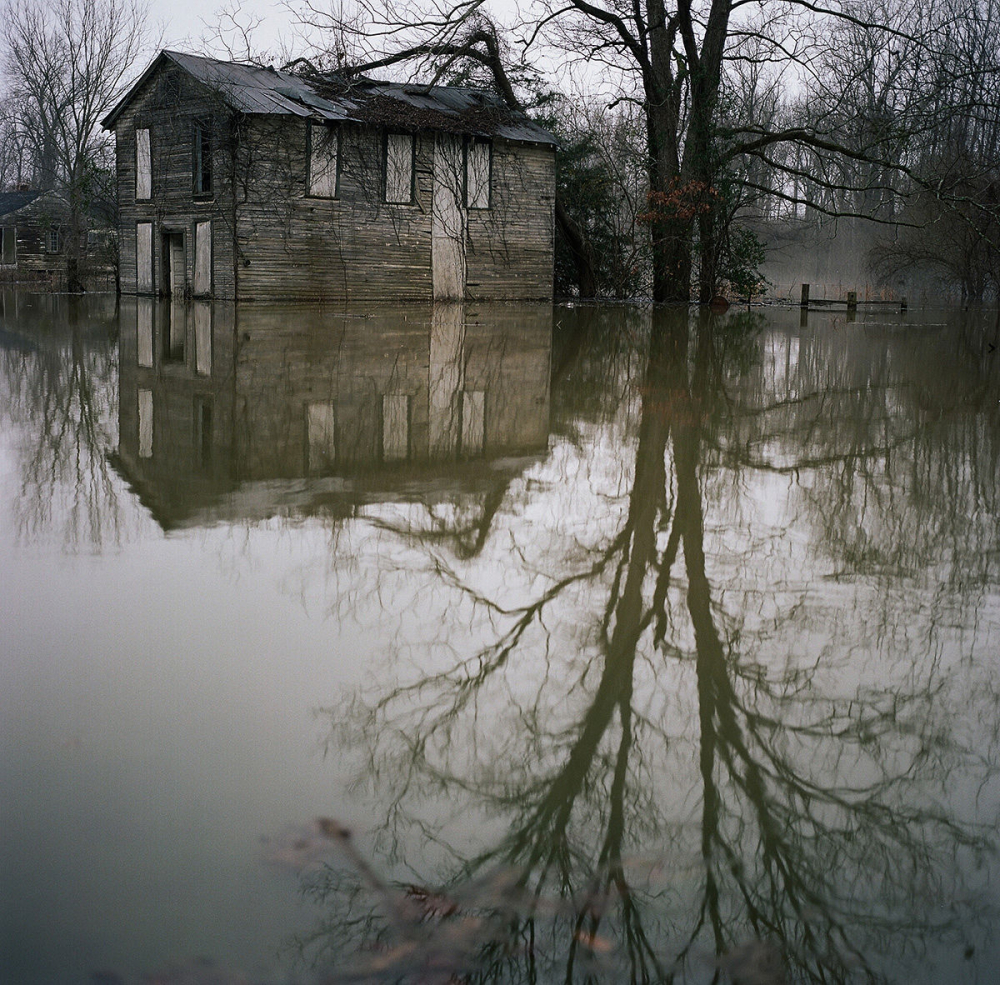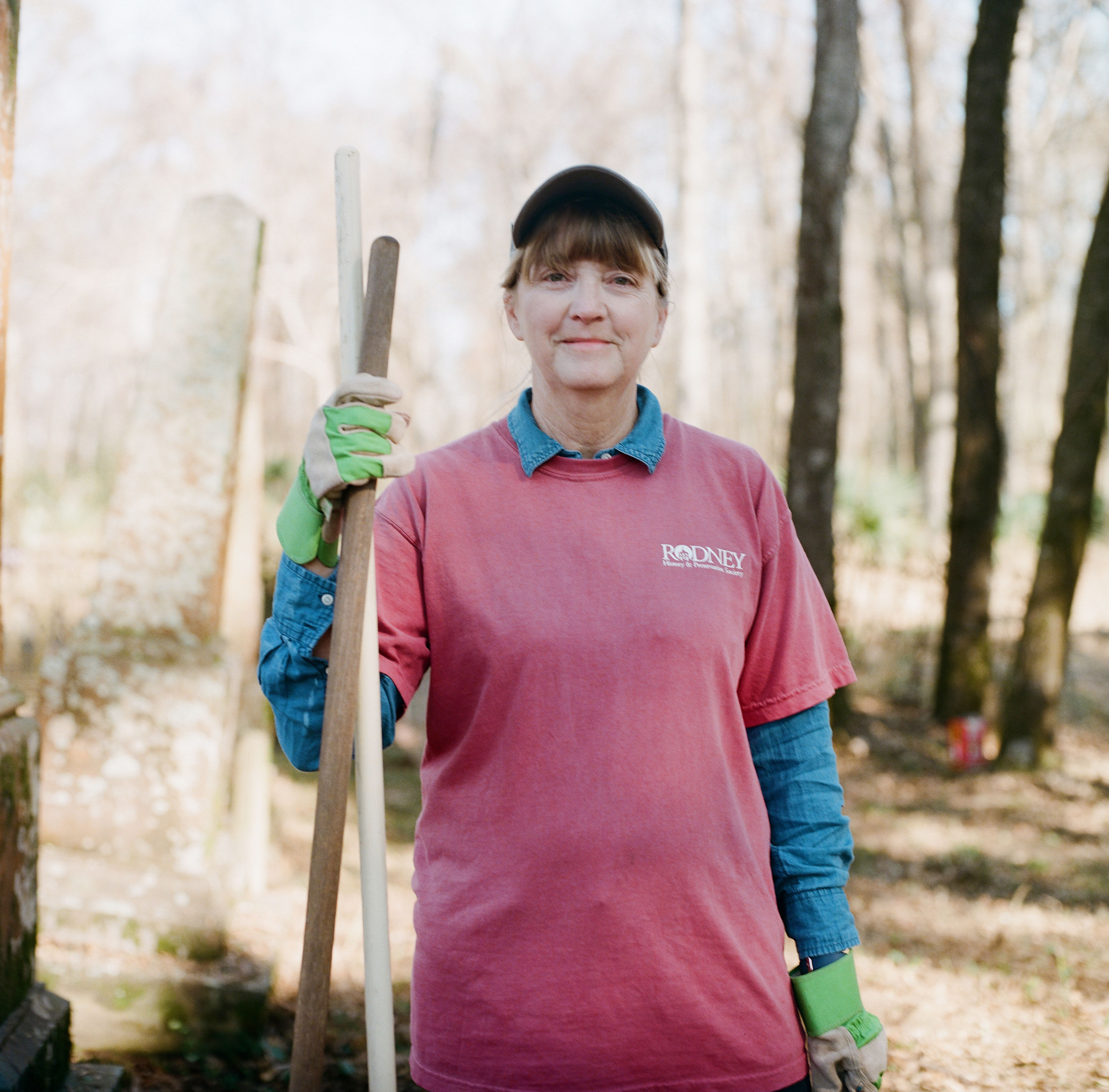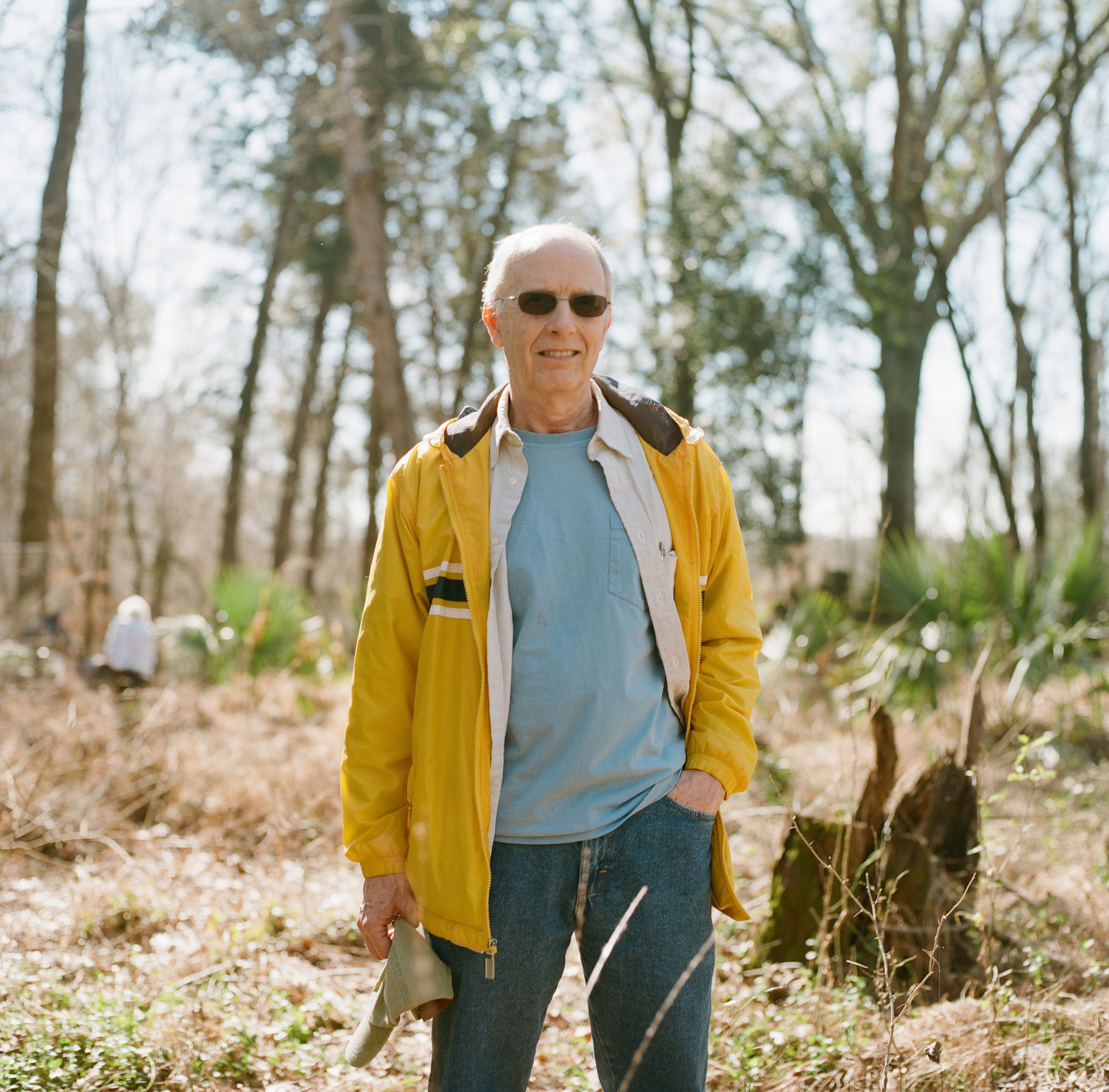It’s not easy to find.
First, you have to locate the Old Country Store on Highway 61 in Lorman, Mississippi. Behind the store, make a turn onto a road that doesn’t look like a road and travel northwest, passing the Cane Ridge Cemetery. At the end of twelve slow miles of alternating surfaces of blacktop and dirt, the road starts to dip and is paved again and is suddenly bordered by an inexplicable curb, just as you would see in a city subdivision. But this is no planned community. This is Rodney, the town that was once a bustling city on the banks of the Mississippi River. Today, it is a ghost town.
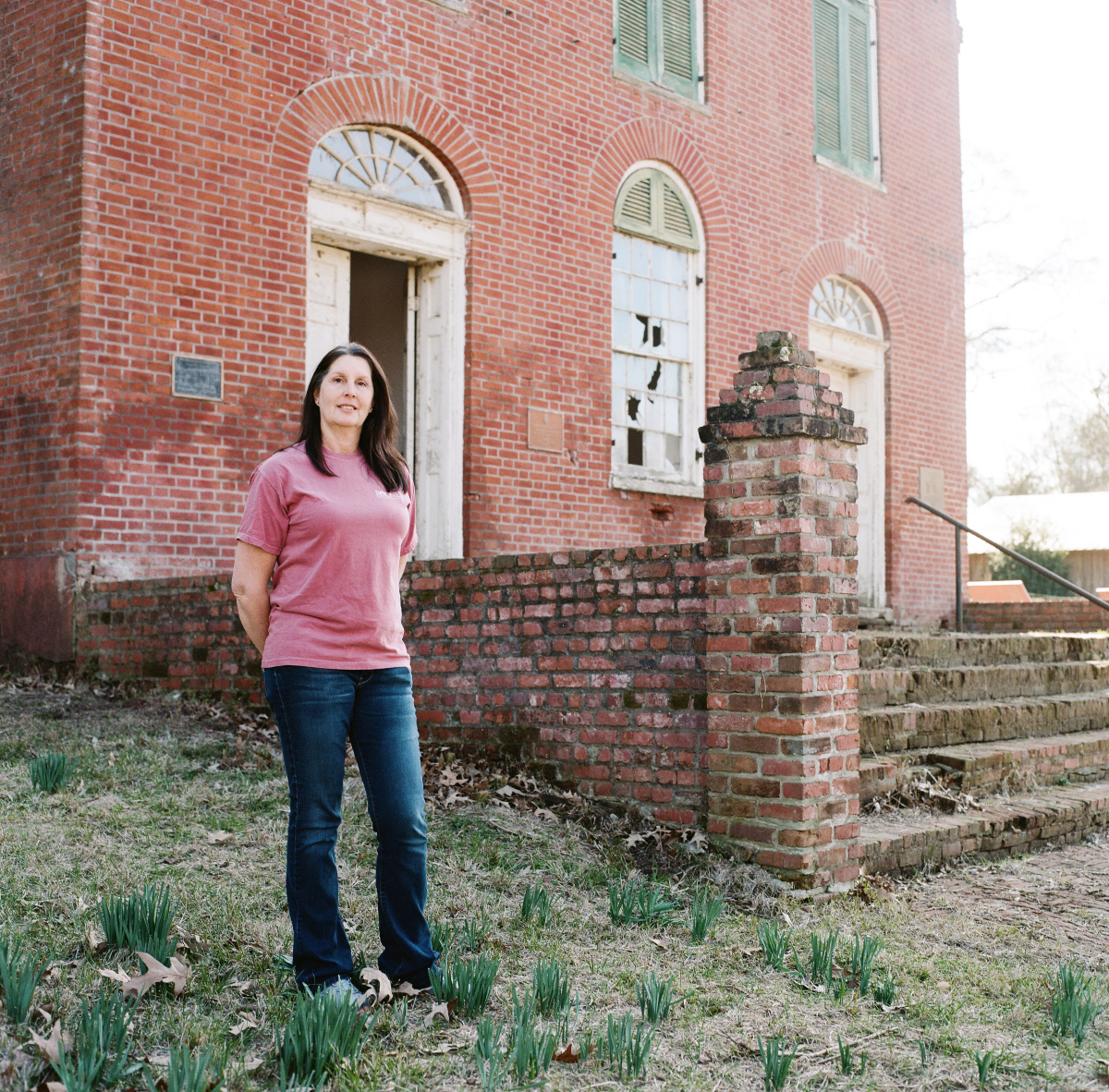
Angel Puckett, president of the Rodney History and Preservation Society, founded in 2017. Angel is the rural route carrier for the area. She stands in front of the Presbyterian Church in Rodney. Photo by Ashleigh Coleman, 2019.
The drive to Rodney winds through one of the poorest counties in one of the poorest states in this country. Jefferson County has a population of about 7,000 and no industries. In the most recent recorded data, Jefferson Country had the highest percentage of African Americans of any county in Mississippi and was the fourth-poorest county in the nation.
“There are no industries here to employ people. Everyone here is poor,” said Tracy “Rev” Collins, Jefferson County Supervisor and pastor of East Mount Olive Baptist Church. In May 2018, Jefferson County was identified by Feeding America as the most food insecure county in the nation, with 36 percent of its residents lacking resources and access to healthy food options.
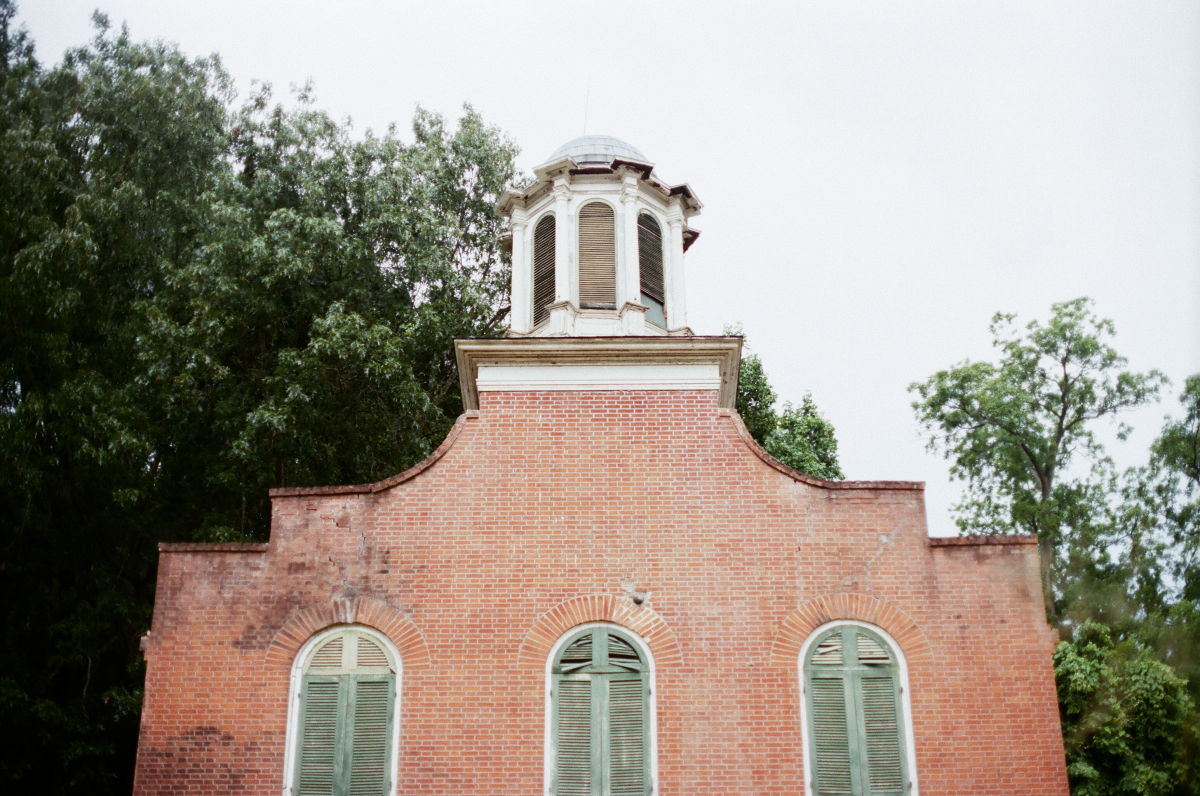
Rodney Presbyterian Church. Photo by Ashleigh Coleman, 2015.
Situated 32 miles northeast of Natchez, Rodney once stood proud as a leading city along the Mississippi River. First called Petit Gulf, Rodney almost became the state capitol after Mississippi achieved statehood in 1817.
The town was incorporated in 1828 and had about 20 buildings stretching from the river to the bluff behind town, according to a sketch of Rodney from that time. The town grew to about 200 residents in the next few years and had many stores, a newspaper, the state’s first opera house, and a Presbyterian Church. Cotton plantations were built by slaves on the fertile soil nearby. The fields were maintained by forced slave labor making the landowners wealthy. The city was struck by the yellow fever epidemic in 1843 and again in 1847. The yellow fever deaths were so widespread in 1843 that national newspapers as far away as Cleveland, Ohio and Philadelphia, Pennsylvania reported that the town had been “almost de-populated” as residents fled to avoid the disease that many suspected came from New Orleans. The surviving residents returned, and the city continued to thrive.
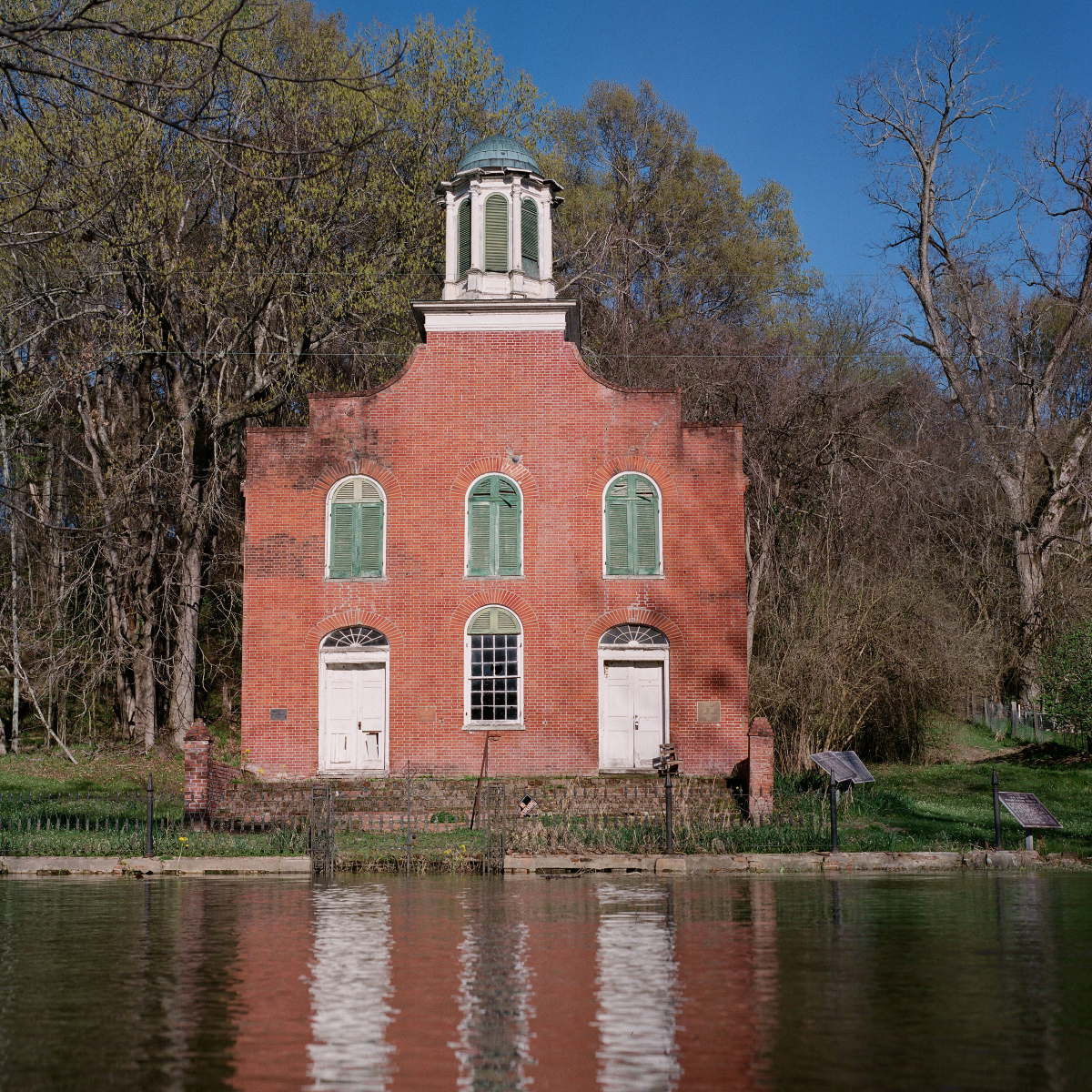
Rodney Presbyterian Church. Photo by Ashleigh Coleman, 2018.
By the 1850s, Rodney became the busiest port on the Mississippi River between New Orleans and St. Louis. The town now had almost 1,000 residents and two banks, two newspapers, a large hotel with a ballroom, and several churches and schools. Rodney quickly grew to 4,000 residents by 1860 with more banks, wagon makers, tinsmiths, barbers, doctors, dentists, and general mercantile stores, hotels, bars and barbershops. The town's growth surpassed that of Jackson, Mississippi, which claimed a population of just 3,191 residents in 1860.
The war, the fire, and the loss of river trade caused many of Rodney’s residents to move to more prosperous towns.
Because of its strategic location on the Mississippi, Rodney saw plenty of action during the Civil War. After the fall of Vicksburg on July 4, 1863, Union warships had control of the Mississippi River with the gunboat USS Rattler stationed at Rodney. One Sunday, a few months after the Confederate surrender at Vicksburg, a Union sympathizer was preaching at the Rodney Presbyterian Church and invited the Union troops to worship. About 20 soldiers attended services that day, only to learn during the second hymn that Confederate soldiers had surrounded the church. After a brief skirmish inside the house of worship, the Confederates captured 17 federal troops. When the gunboat soldiers learned of the capture of its soldiers, they bombarded the town. Then the Confederate lieutenant threatened to hang all of the imprisoned Union troops if the barrage did not stop. By that time, the cannonballs from the ship had hit four homes, as well as the church. The attack stopped and Rodney area residents were proud that their small squad of rebel cavalry had captured the crew of a large gunboat. This story is an important part of the town lore, as locals point out the replica of a cannonball lodged above the church doors.
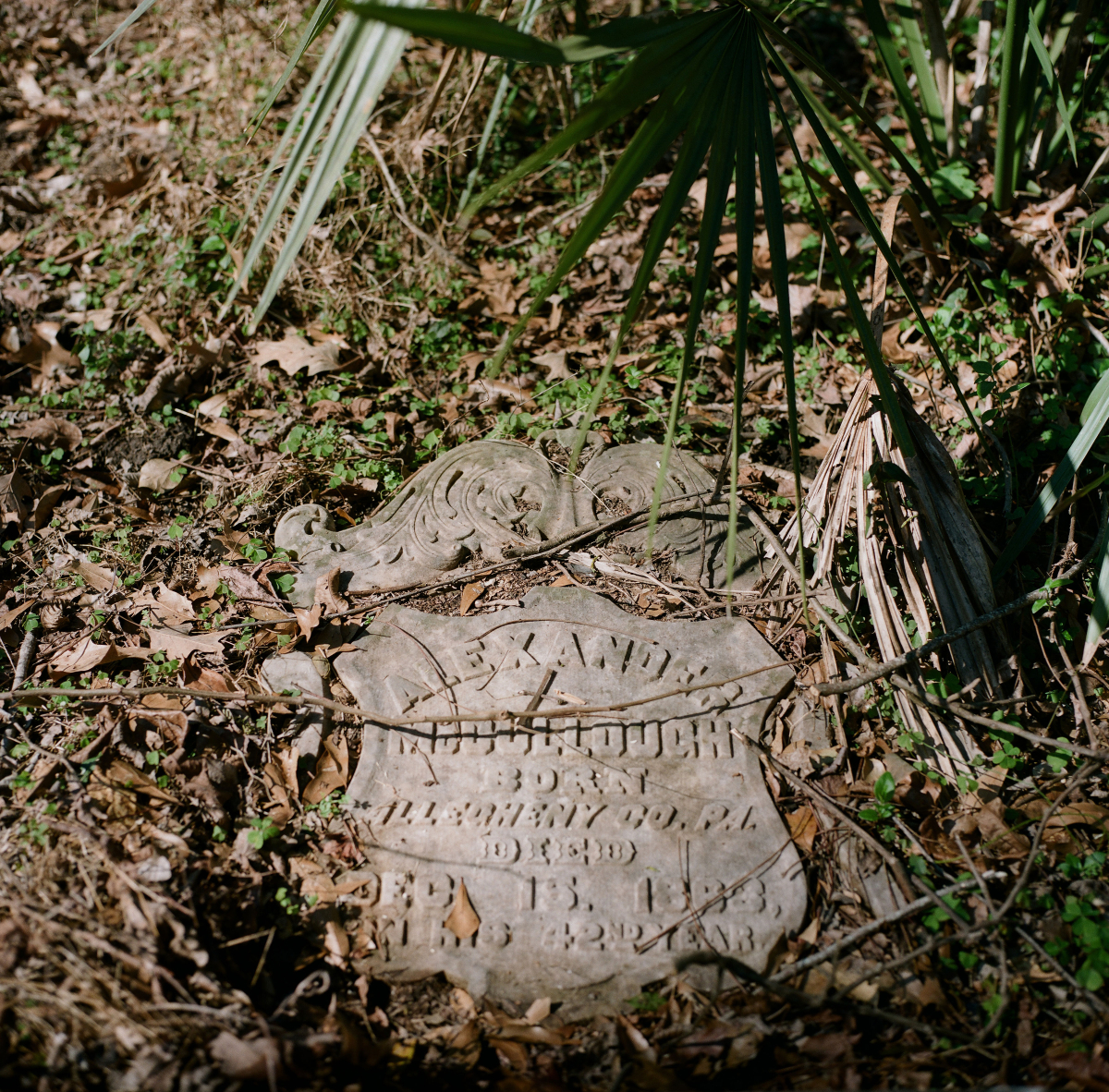
Graves in the Rodney Cemetery date back as far as the town’s founding in 1828. Photo by Ashleigh Coleman, 2019.
Reconstruction after the Civil War brought many changes to Rodney. For generations, wealthy landowners prospered from a workforce consisting of enslaved men, women, and children forced to migrate to a new continent and suffer generations of cruel treatment and long days of unpaid labor. When the slaves became free people, many left the area. Residents had already lost food and livestock when the Union troops came through during the War. In 1869, a fire seriously damaged the growing community. Then, in 1870, Mother Nature dealt a blow. A large sand bar formed in the river, forcing the Mighty Mississippi to move two miles west. The town had lost its port. The war, the fire, and the loss of river trade caused many of Rodney’s residents to move to more prosperous towns. By 1930, the Governor of Mississippi proclaimed that Rodney was no longer considered an official town. Since then, floods from the nearby river continue to diminish the remaining structures. Most locals say that the 2011 flood washed away most of the residents and structures that were left.
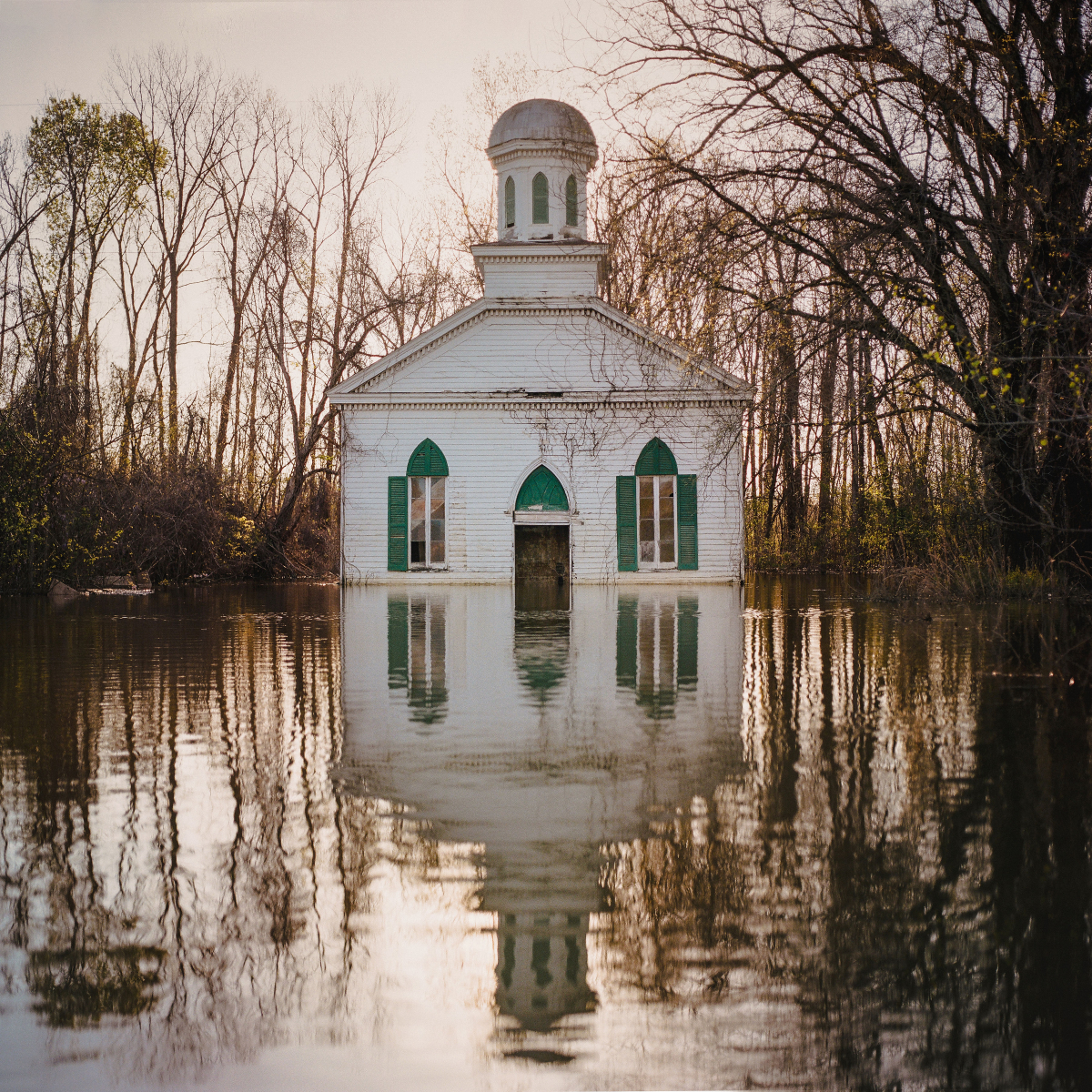
Gothic revival Baptist Church in Rodney. Photo by Ashleigh Coleman, 2018.
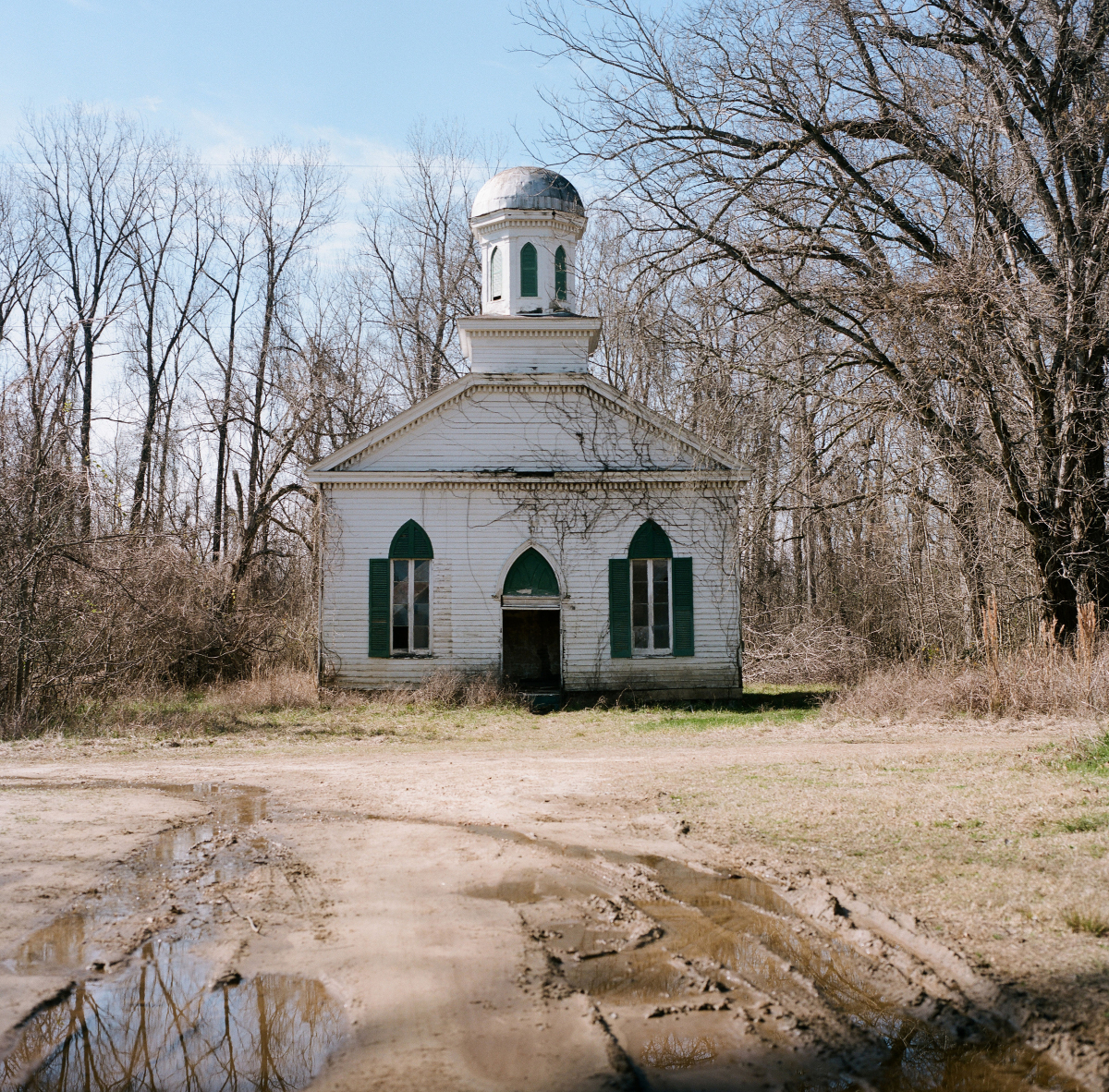
Gothic revival Baptist Church in Rodney. Photo by Ashleigh Coleman, 2019.
The contrast between Rodney’s past and present is striking. Even though the town is now in ruins, it still stands as a time capsule of a past we seldom see today. Rodney represents so many parts of Mississippi’s economic, cultural, and literary history and made a famous appearance in Eudora Welty’s novella, The Robber Bridegroom, published in 1942. A mythical story set in Mississippi in the late 1700s, The Robber Bridegroom, features Rodney as the bustling riverfront town it once was. So the town lives on in literature and even in a Broadway musical based on Welty’s work.
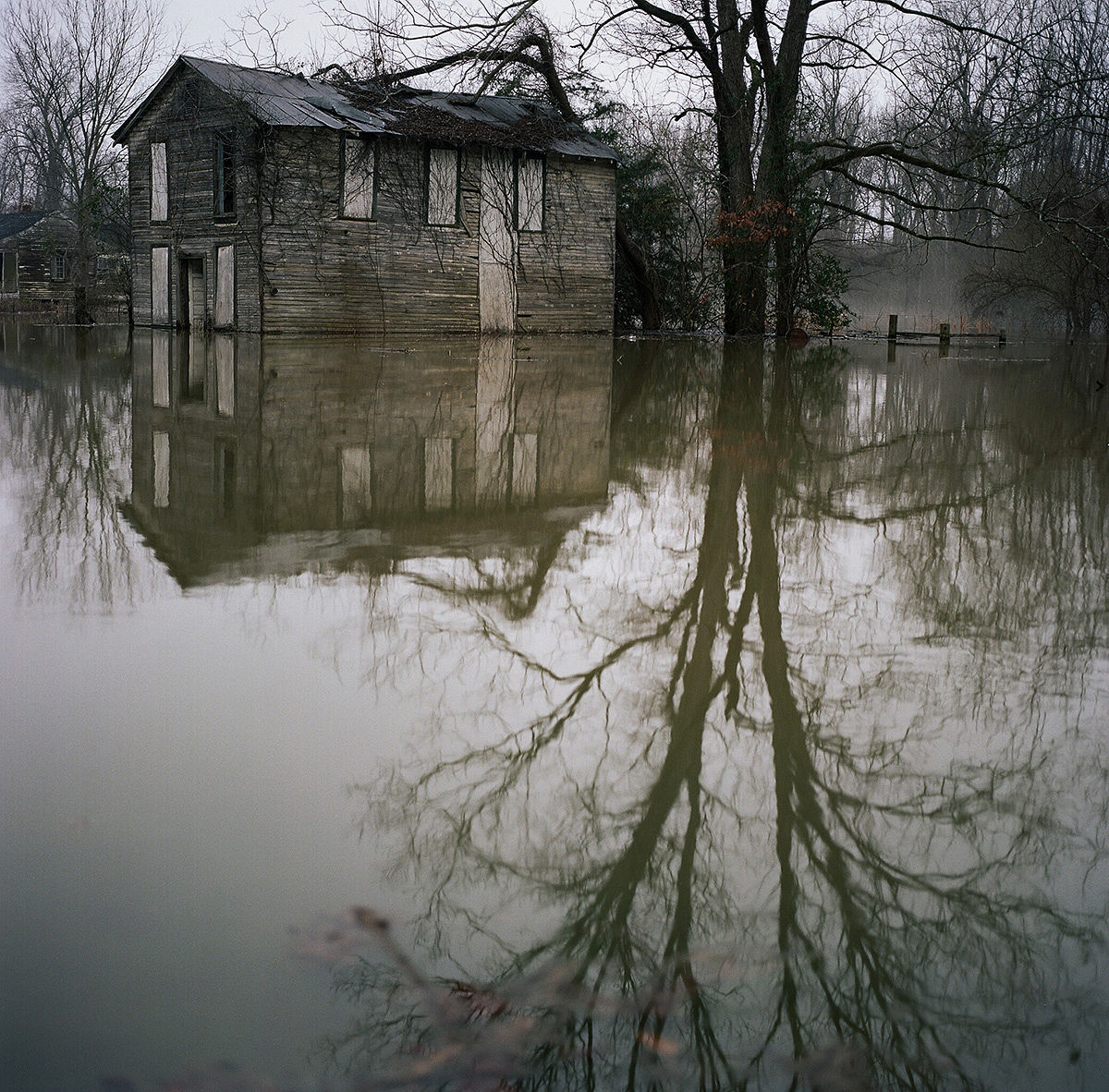
Abandoned cabin in Rodney. Photo by Ashleigh Coleman, 2016.
When you visit Rodney today, which is basically now a one-road town, you can only see remnants of the past. A stunning Greek Gothic revival church with its silver dome rises into the sky. This is a Baptist Church, which ended its days as a rural African American church. This striking structure is more than simply unused. It’s derelict. The empty structure is surrounded by woods and a ramshackle cabin a few lots over. The paved road which leads into Rodney dead-ends into a dirt road, which was once the bustling Commerce Street. Now it’s almost always muddy. When you turn onto the road, to the right you see the Presbyterian Church with its grand bell tower. This structure is called the finest example of Federalist architecture in the state. Once you look closer, you see the broken windows and rotting wood. Spanish moss drapes from trees along the roadside. It’s hard to imagine that this ghost town was once a bustling port city.
First called Petit Gulf, Rodney almost became the state capitol after Mississippi achieved statehood in 1817.
“Imagine every steam boat on the Mississippi stopping here and people walking up and down the streets,” said Jeffrey Owens, PhD, chairman of the history department at Tyler Junior College and a board member of the Rodney History and Preservation Society. At its height, this town had 4,000 residents and churches, stores, hotels, bars and banks at this location along the river.
Owens walks the dirt paths of present day Rodney and points out the former street names. “This main street is Commerce Street. This was Church Street with the Presbyterian Church at the intersection of Church and Commerce. Then this here is Cypress Street and beyond it, Magnolia Street.” He continues to point out roads that are no longer visible.
Commerce Street used to be two blocks from the riverfront. Now the Mighty Mississippi is four miles away, visible only in the winter from the cemetery on a hill above town.
“The river has taken Rodney back,” said Renee Way Duffy of Pensacola who was born in Rodney in the early 1960s.
“The town has flooded so many times that it just stays wet,” Owens said.
“If you dig a hole, it would fill with water.”
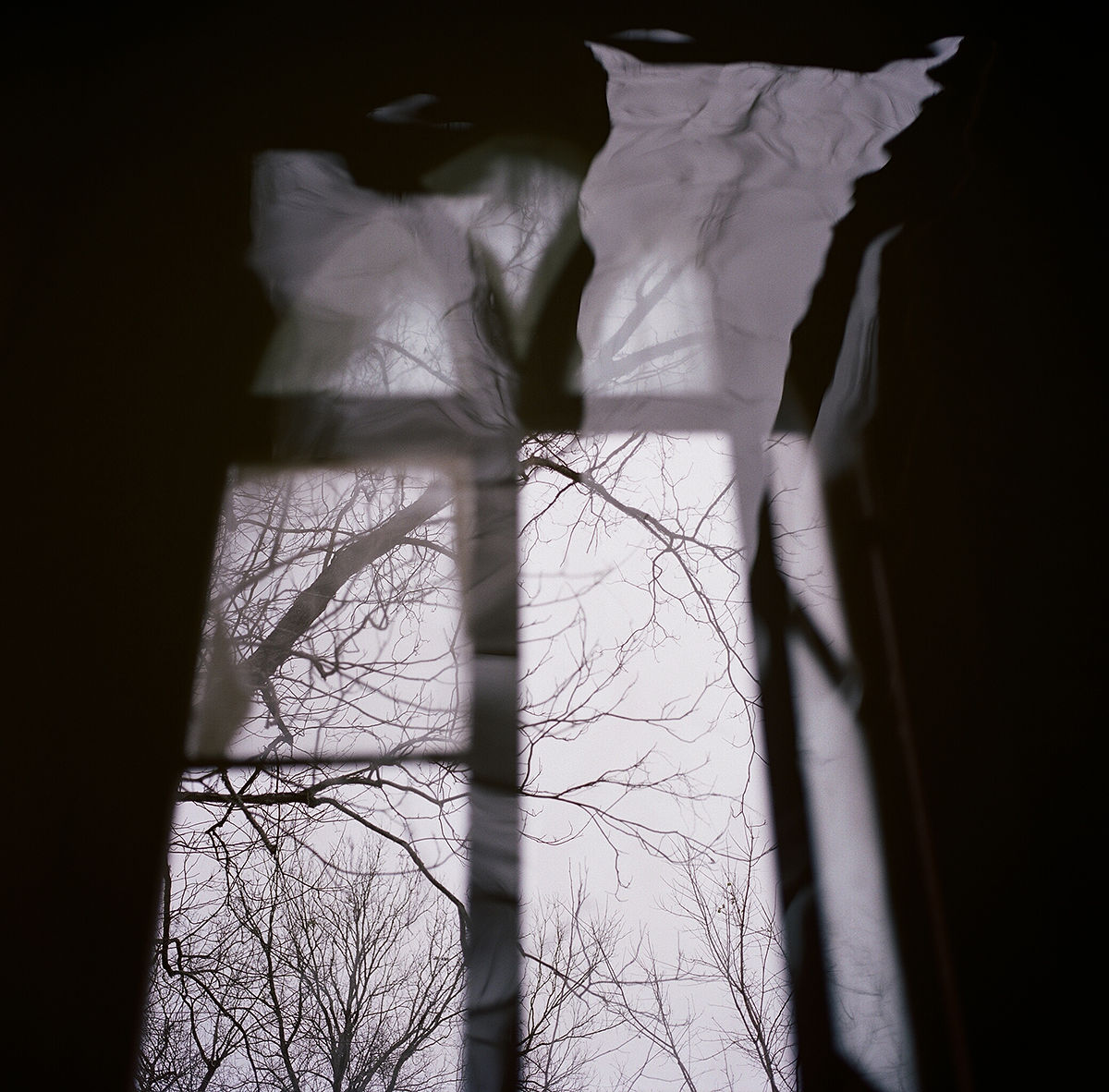
Interior window of the Baptist Church in Rodney. Photo by Ashleigh Coleman, 2016.
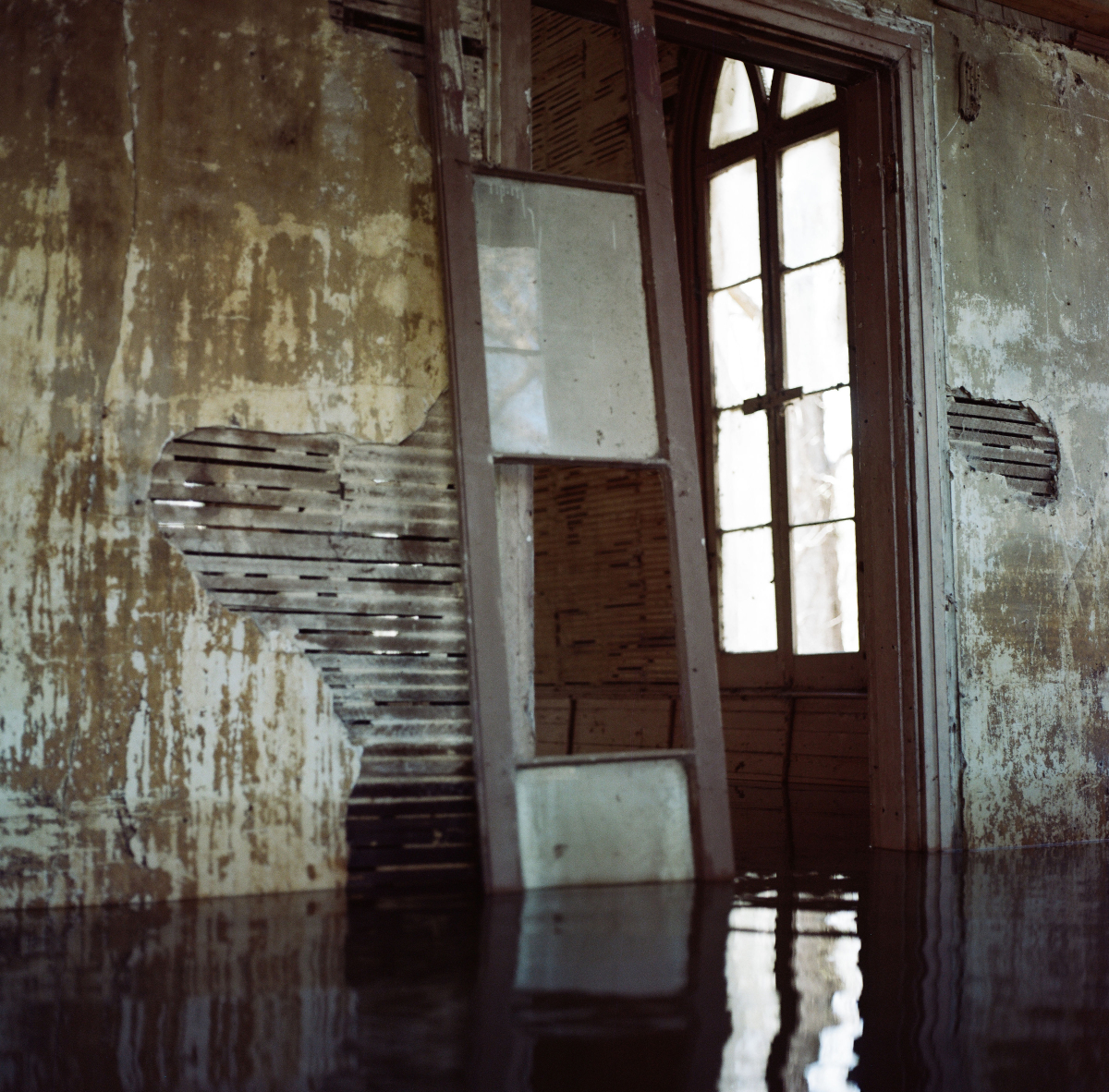
Interior of the Baptist Church in Rodney. Photo by Ashleigh Coleman, 2018.
Angel Puckett, president of the Rodney History and Preservation Society, moved here in 1980 and worked at Alston’s general store, which is now an empty shell of a building on Commerce Street. Back then, according to Puckett, Rodney still had about 75 to 80 people living here.
“It was like a family, they took me under their wings,” Puckett said.
“It didn't matter if you were black or white, if you were from Rodney, you were family.”
But she has since watched buildings be torn down or moved to other areas of the state. “People just got tired of fighting the floods,” Puckett said. By 1993, the population had dwindled down, according to Puckett, who now lives in nearby Lorman, and is the rural route mail carrier for the area. She estimates about 10 people make their home in the town that is not really a town.
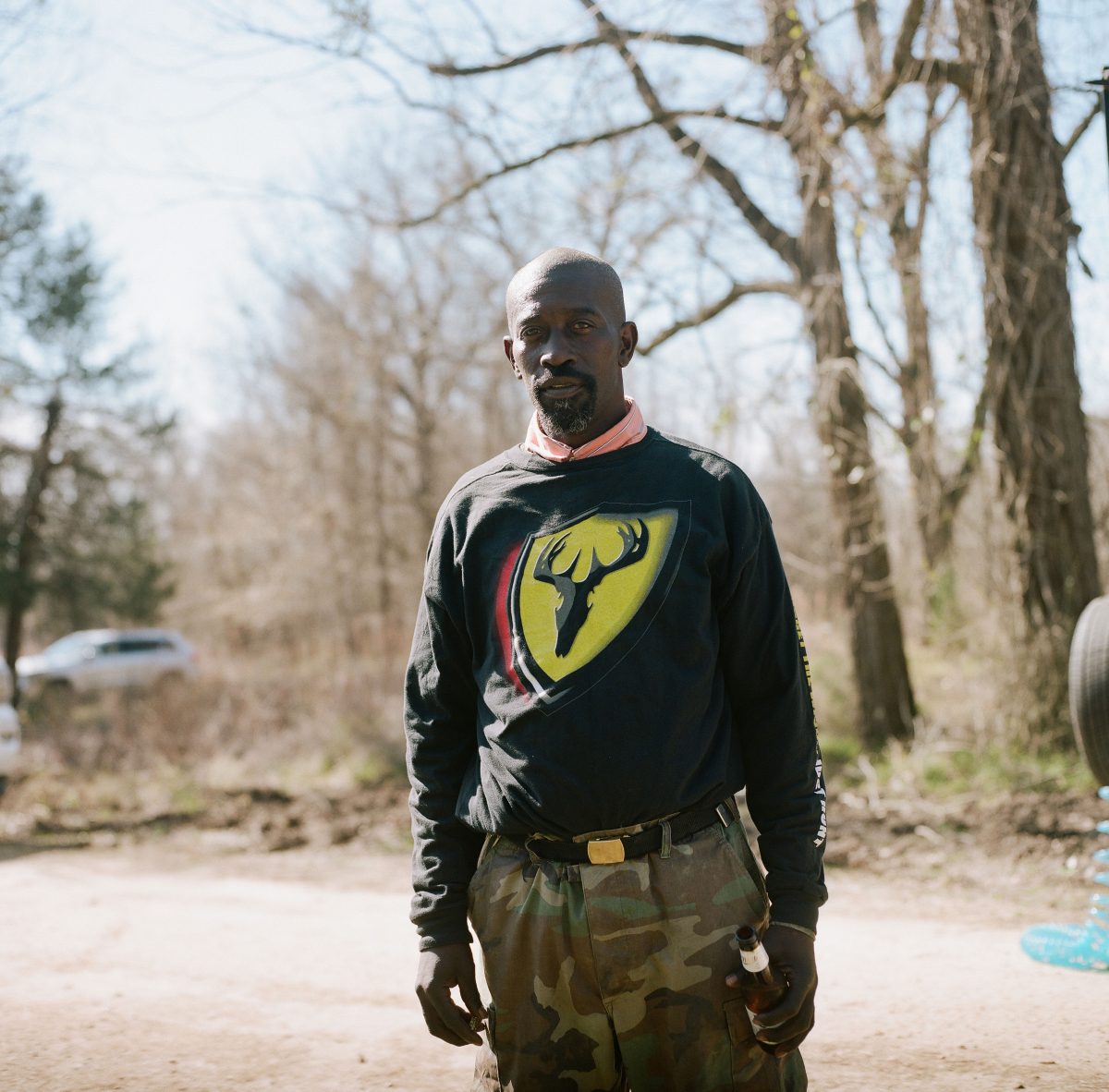
Jerry Thomas, one of very few who still live in Rodney. Photo by Ashleigh Coleman, 2019.
Jerry Thomas has lived here his whole life with his brother and mother. “I’ve never lived anywhere else,” he said. The family, whose home is built on raised pilings, goes to a relative’s home when the town floods. They exist on the land and the generosity of others, Puckett said.
“You just don’t get Rodney out of your blood,” Puckett said.
Thomas is perplexed over the hundreds of people who come back every year to visit Rodney. To him, it’s just his home. But to the rest of the world, Rodney enchants.
“You just don’t get Rodney out of your blood,” Angel Puckett said.
Two younger Mississippians entranced with Rodney are Brian Little and Perry Davis. “The history keeps drawing us back,” said Davis. They created and maintain a website and Facebook group called Mississippi Obscura, to share their interest in stories about the state. Living an hour east of Rodney in Crystal Springs, they travel most weekends to collect history and lore about the state.
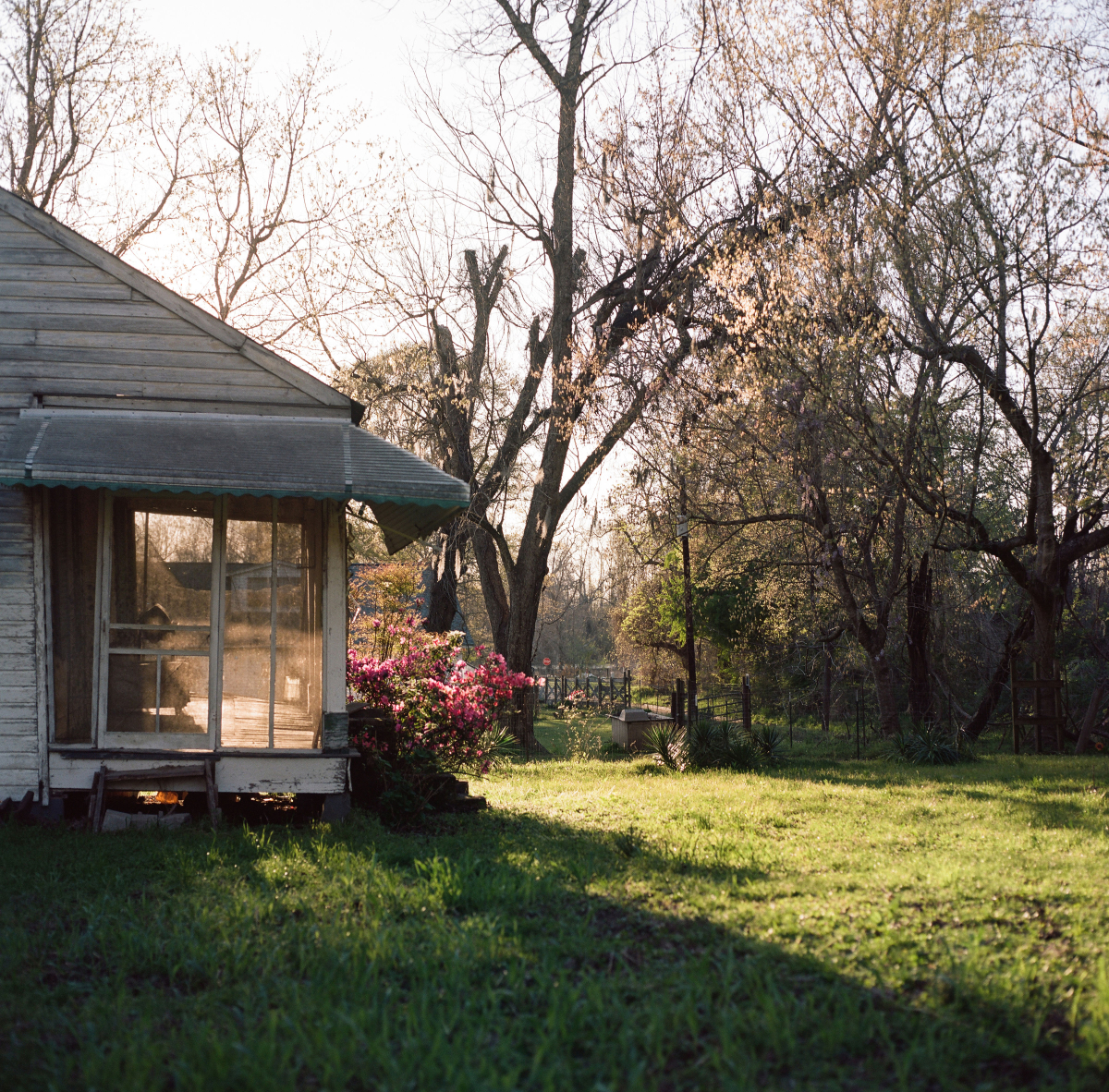
One of the last few remaining residences in Rodney. Photo by Ashleigh Coleman, 2018.
“Rodney is a different kind of town. We were attracted to the lost aspect, the ghost town story, and the old cemetery and churches,” said Little.
Another young Mississippian fascinated by Rodney is archaeologist Anna Graham who now lives in North Carolina. Among the myriad reasons she keeps coming back is that she “finds it fascinating to see just how much the Mississippi River, in its pre-Army Corps controlled days, wielded fate and fortune for the towns along its course.”
“It’s a tangled web in Rodney,” said Mary Pallon, secretary of the historical society, who has been interested in Rodney since she saw her grandfather’s research on the area when she was young. Her grandfather was the last assigned minister at Rodney Presbyterian from 1916-1923. The town had already started to lose population, and the church had dwindled to 23 members. He later became part of an effort to save the church in the 1950s.
Through a Rodney Facebook page, Pallon met Bill Lowrance, now vice president of the historical society. His father was a minister at the nearby Port Gibson Presbyterian Church and preached in Rodney once a month in the 1950s. Lowrance, now a tax attorney in McLean, Virginia, remembers going with his father to Rodney as a child. A self-proclaimed history nut, Lowrance, with the support of Pallon and others, helped set up the Rodney History and Preservation Society in late 2017 as a 501(c) 3 non-profit in Mississippi.
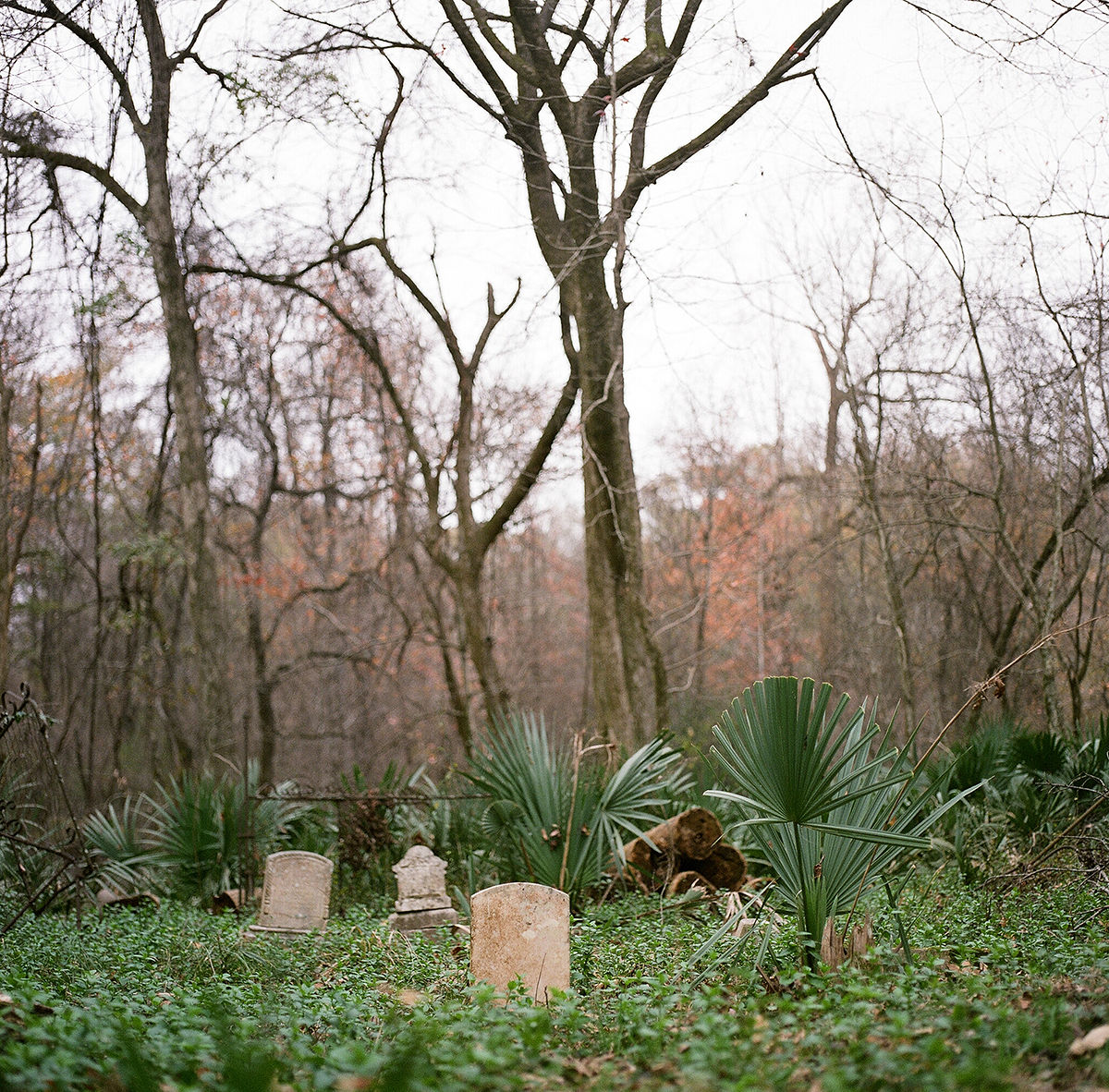
The graveyard on a bluff which overlooked the town and the Mississippi River almost 200 years ago. Now the river is four miles away and the town is mostly abandoned. Photo by Ashleigh Coleman, 2016.
A year later, the group announced that they had been able to purchase the Rodney Presbyterian Church from its longtime owners, the United Daughters of the Confederacy. The group is continuing to raise funds to save the church from structural collapse. Started in 1828, the same year the town was founded, the red brick structure was dedicated on January 1, 1832. The church continued to follow the town’s course and decreased down to 16 members in 1923 and lost its pastor (Pallon’s grandfather). Traveling pastors led services until the church was sold in the 1960s. The structure suffered from two major fires and flooding, just like the town. As it continues to deteriorate, the church still stands tall as a symbol of the community.
Each member of the board of the Rodney History and Preservation Society has a unique connection to Rodney. Tammy Watts grew up in Crystal Springs and her family had a hunting camp nearby. She remembers visiting the Alston Store in Rodney when she was younger. She and her husband Shannon continued to come to Rodney with their daughter and saw the town disintegrating before their eyes. They would mow the lawn of the church and sweep the inside. “We just wanted to do more to help,” said Tammy.
“There aren’t too many ghost towns that have their own newspaper,” said
Owens.
Owens got interested in Rodney when he first visited at age 15 and saw the cannonball over the church door and heard the story of the Rattler attack during the Civil War. “That was in the 1970s, and there were still people living here with businesses.” A few years ago, Owens saw on a website that Rodney Presbyterian was for sale and found Pallon's and Puckett’s facebook pages. They quickly saw his interest in historic preservation and named him to the board. He is now editor of the Rodney Telegraph, a quarterly online publication.
“There aren’t too many ghost towns that have their own newspaper,” said Owens. ***
“Everyone interested in Rodney becomes bewitched,” said Jeffrey Owen.
When you see the cemetery, you really might believe the place has its own resident ghosts. You could miss the three-acre graveyard if you didn’t know to walk up the steep dirt path behind the Presbyterian church. Once you climb the hill, you see the rambling overgrown cemetery with at least 200 graves that date back to the town’s founding in 1828. It’s hard to track the numbers because many of the tombstones have fallen or disappeared entirely under the overgrowth and trees. Some grave markers have even fallen off the edge of the embankment over the forest that runs down to the town.
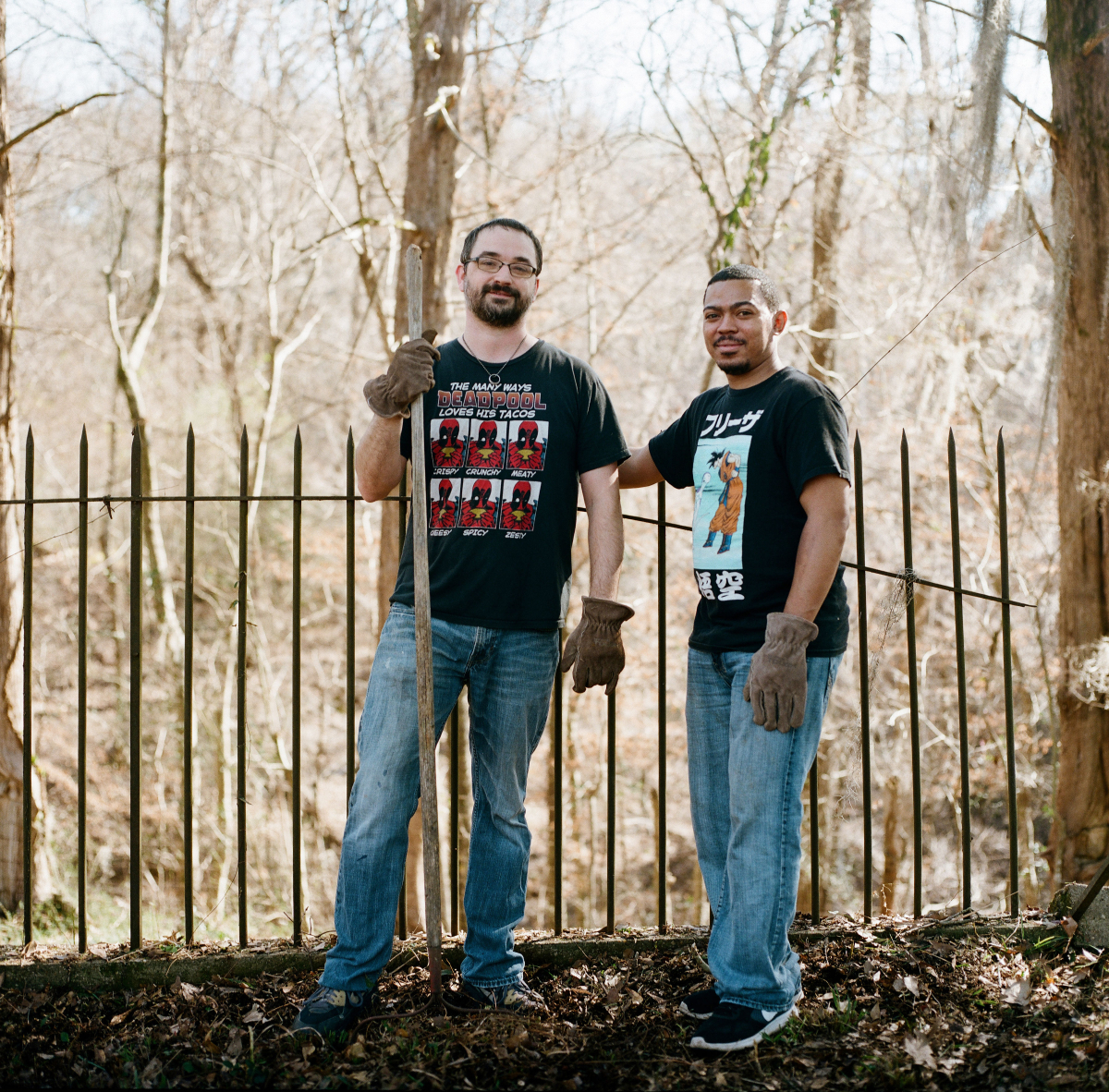
Brian Little (left) and Perry Davis (right), co-authors of the Mississippi Obscura website. Photo by Ashleigh Coleman, 2019.
If you arrived in Rodney and saw the abandoned houses and churches and knew nothing about the town, “this graveyard would make you realize this was not a small town,” said Brian Little.
Trent Lewis came to the Rodney Cemetery for the first time four years ago with his group, the Sons of Confederate Veterans. “I fell in love with the church and the cemetery. It broke my heart to see it all falling apart,” said Lewis.
The cemetery cleanup on a Sunday in early February 2019 brought at least 65 visitors to Rodney. Both young people fascinated by this ghost town and older folks with ancestors in the graveyard come to pay homage and preserve this rural outpost.
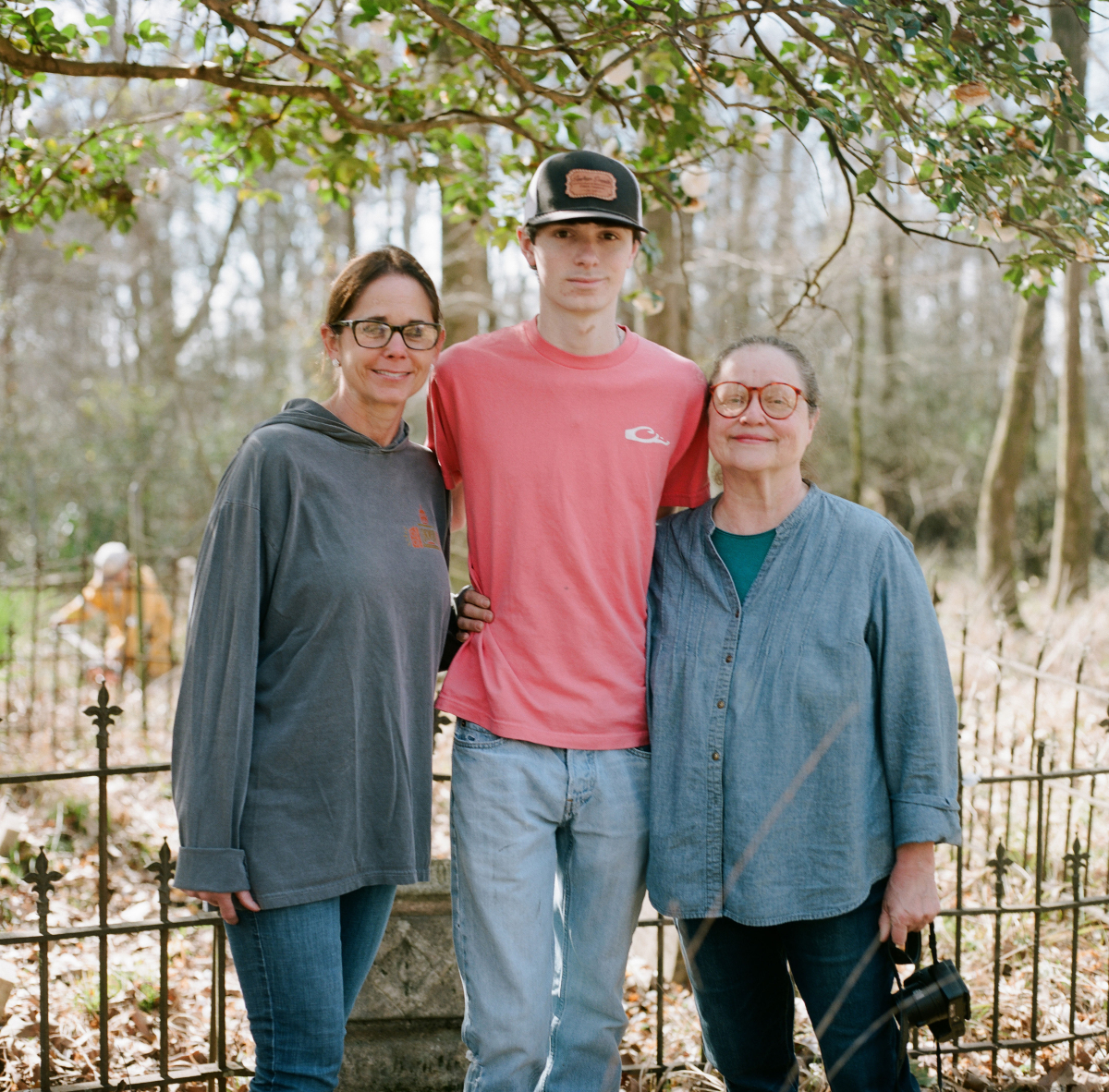
Kathy Moody (far right) with daughter-in-law Cara and grandson Jackson. Photo by Ashleigh Coleman, 2019.
Kathy Moody, who lives in Natchez, has at least a dozen ancestors buried here. She spent many years visiting her grandfather’s logging camp. She can remember more little houses along the streets and more people who would go to the store. Her sisters also once lived here. Her earliest ancestor to settle here, Lawrence Buerkle, came here from Germany in the 1840s. He and his wife Catherine first lived on a houseboat in the river making whiskey and selling it in bottles that he got from Native Americans in the area. With the whiskey earnings, he built a two story building right on Commerce Street with a saloon and a stable on the ground floor. Buerkle and his family lived upstairs. That site is now an empty lot. “During the depression, one of the original owner’s granddaughters sold the bricks, and the building was taken down,” said Moody.
The Buerkle family name was eventually Americanized to Burkley. Moody’s grandfather owned 2000 acres in the swamp when he died a few years ago. Another relative was once the postmaster here. Moody’s connections to Rodney’s past run deep. She came to the cemetery clean up with her daughter-in-law and grandson to pass on the love of Rodney on to the next generation.
“I’m trying to get more kids to see Rodney. I want to see this place evolve and prosper,” said Tracy “Rev” Collins, the Jefferson County Supervisor. Collins also leads custom tours of the area and loves to tell about the rich history of Jefferson County. “I love history. It’s vital to who we are.”
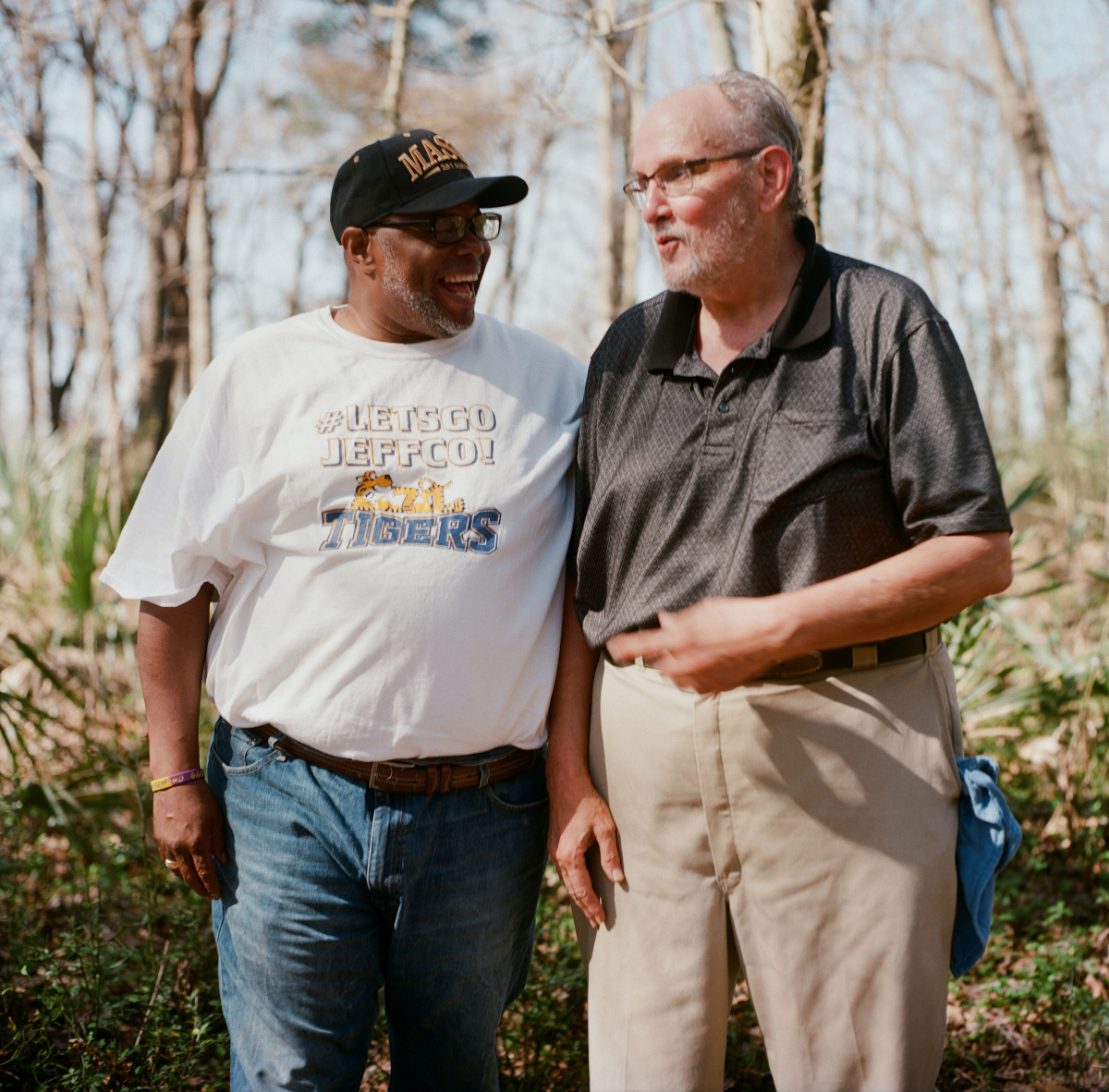
Tracy Collins (left), Jefferson County Supervisor and pastor of East Mount Baptist Church and Don Simonton, Jefferson County resident and retired professor from Alcorn State. Photo by Ashleigh Coleman, 2019.
“Everyone interested in Rodney becomes bewitched,” said Jeffrey Owen. “This town burned twice, had yellow fever epidemics, didn’t get the railroad, and the river moved. No wonder it has such bad luck.”
Yet people keep coming back, under the spell that is Rodney.
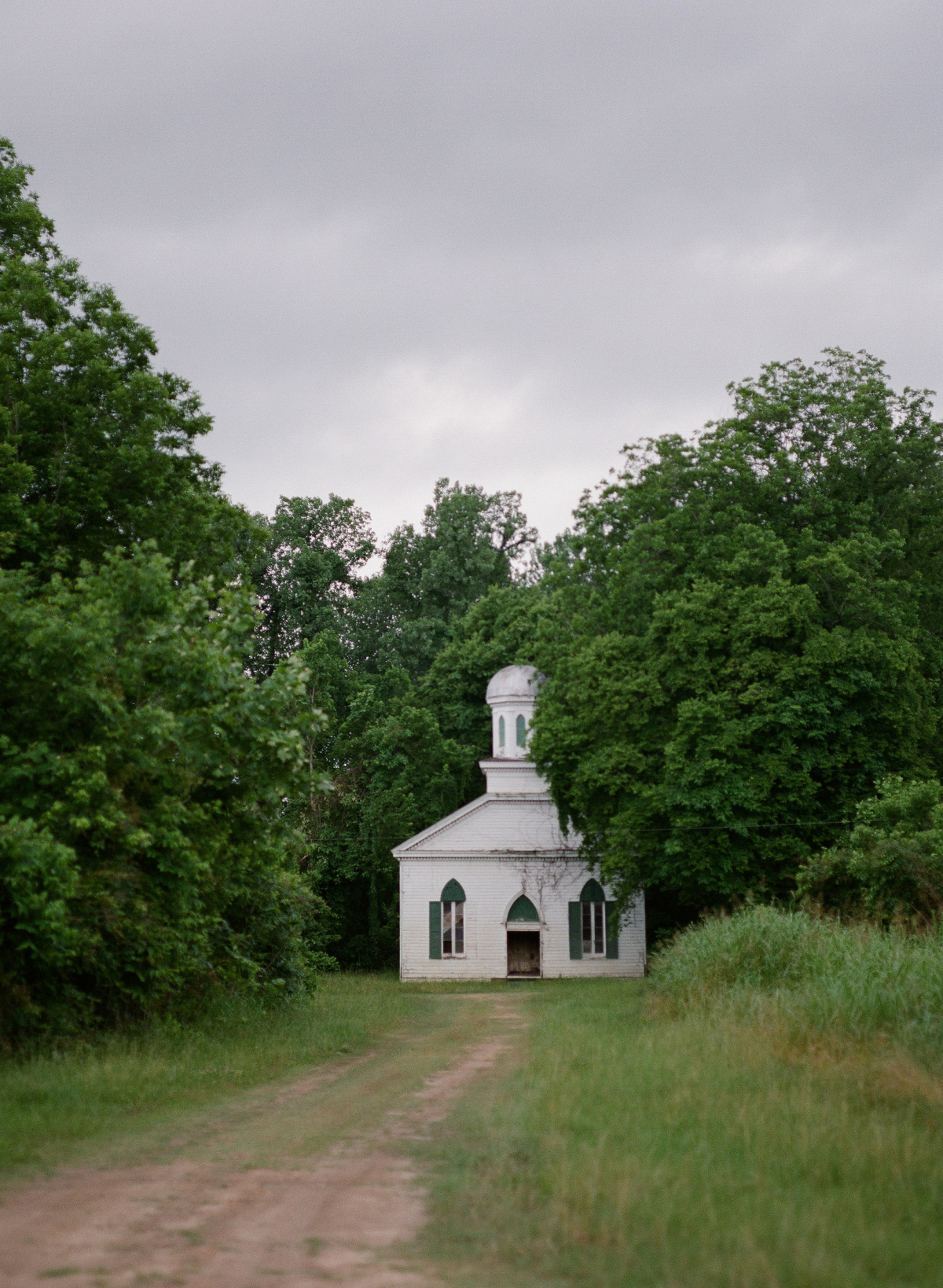
The Baptist Church in Rodney. Photo by Ashleigh Coleman, 2015.

